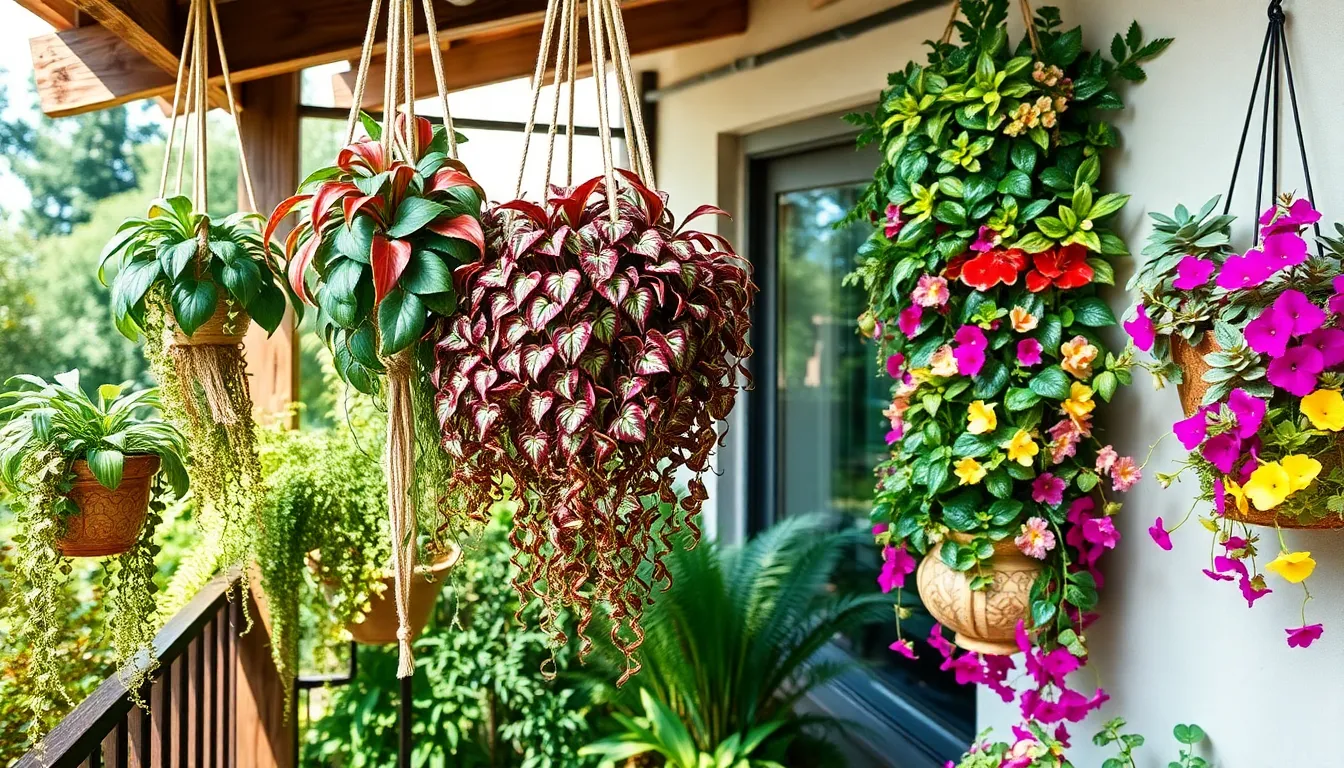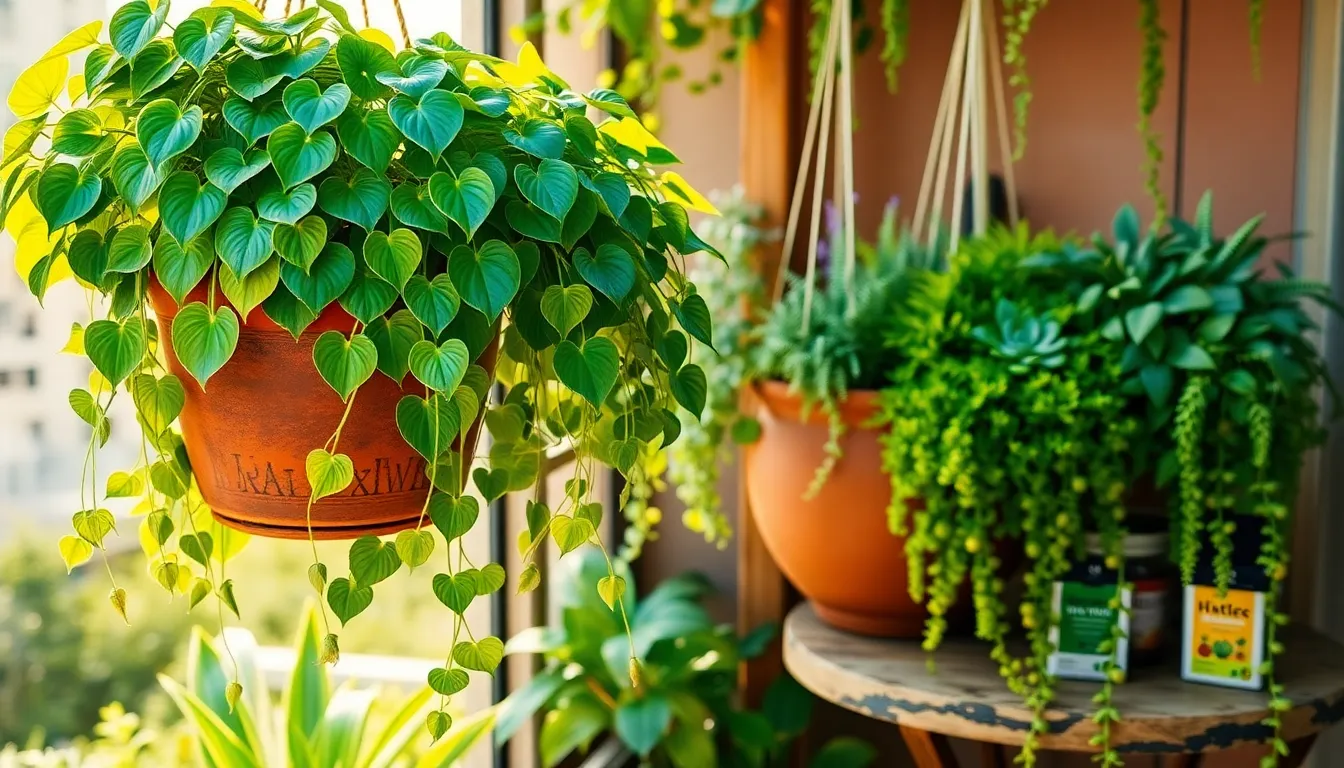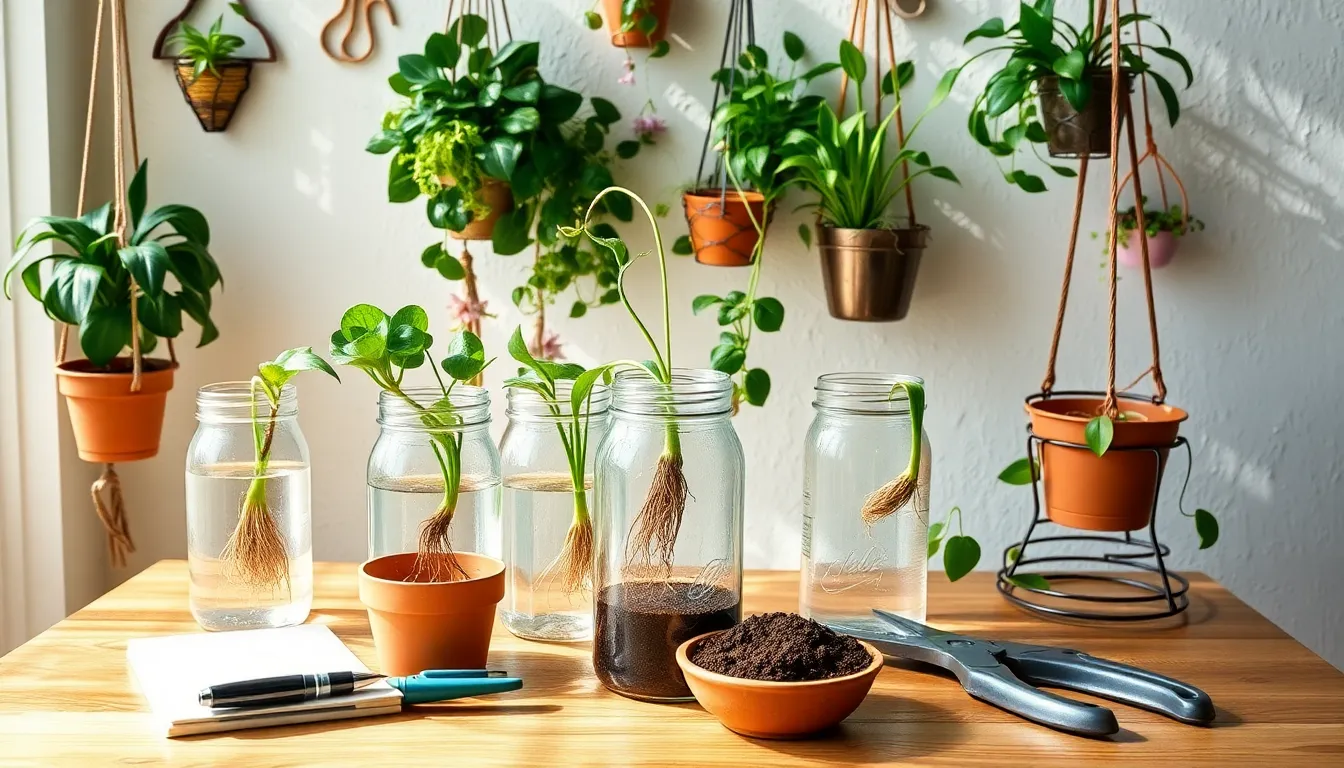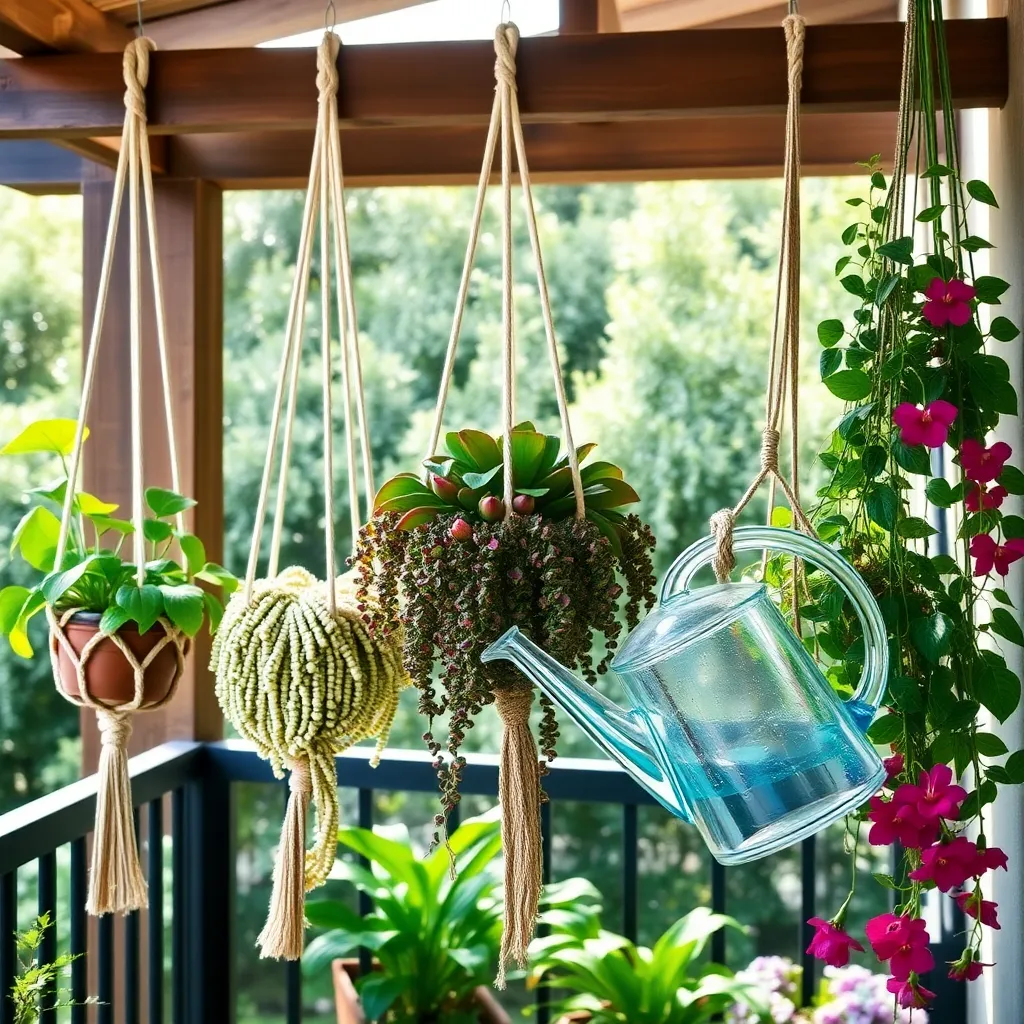In the delightful world of gardening, where every plant tells a story, hanging plants bring a touch of magic that often goes unnoticed. Whether you’re a seasoned gardener or nurturing your first seedlings, incorporating hanging plants into your green sanctuary promises to transform not just your space, but your gardening experience as a whole.
Imagine walking into a room and being greeted by a cascade of greenery, each leaf dancing gracefully with the light. Hanging plants offer this unique charm, but their benefits extend far beyond aesthetics, providing unexpected perks that cater to both your garden and your well-being.
You’ll soon discover that these floating wonders are more than just pretty faces. From enhancing air quality and maximizing space to creating tranquil retreats, hanging plants hold secrets that can enrich any gardener’s journey. Join us as we explore five surprising advantages of growing hanging plants, and learn how to unlock their full potential in your own garden oasis.
Maximizing Vertical Garden Space
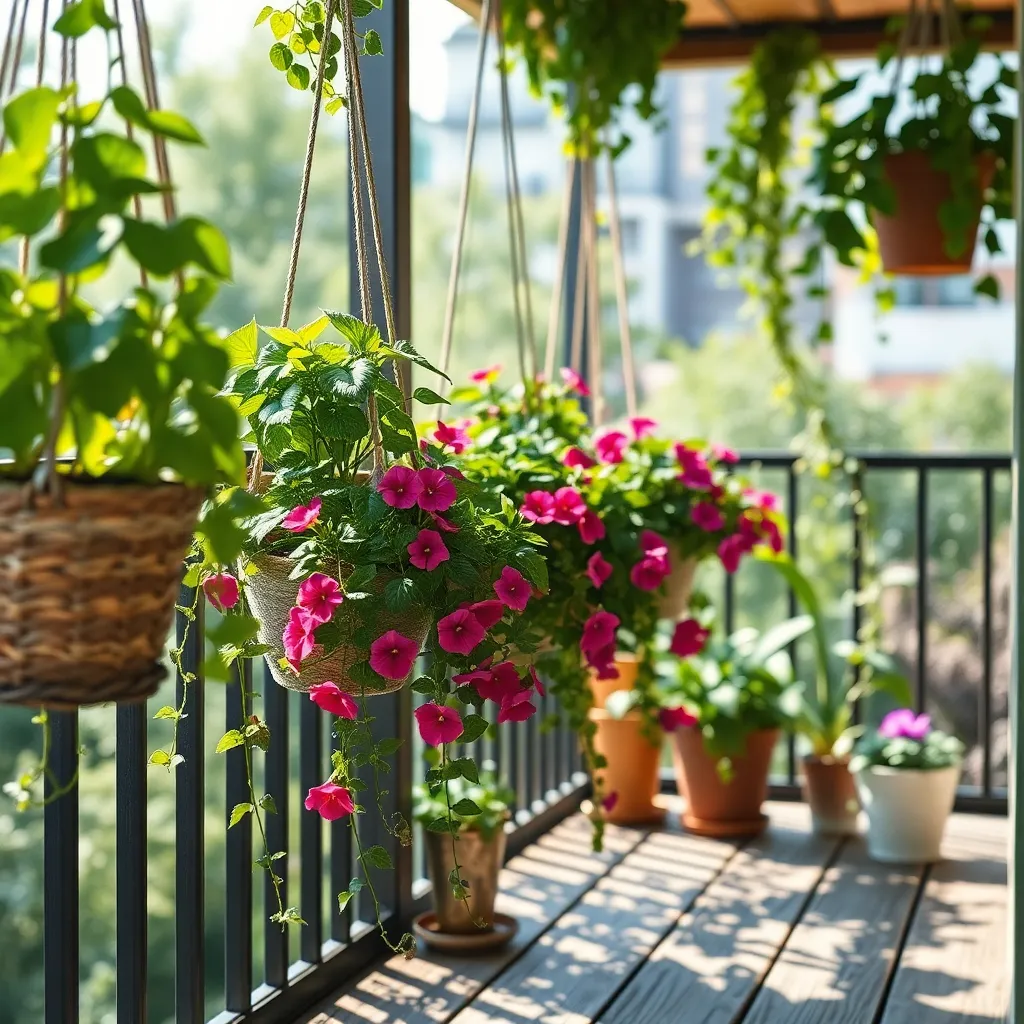
Vertical garden spaces are ideal for gardeners with limited ground area, allowing them to grow more plants in a smaller footprint. By utilizing walls, trellises, and hanging systems, you can maximize your gardening space and introduce more variety into your plant collection.
Beginners can start with easy-to-grow hanging plants like pothos or spider plants, which thrive in indirect light and require moderate watering. Ensure your vertical garden setup provides adequate drainage to prevent root rot, which is crucial for the health of these plants.
For a more advanced approach, consider using a tiered hanging system, which allows for different plant varieties to receive the light and moisture levels they need. Succulents and herbs like thyme or oregano do well in these systems, as they prefer well-draining soil and less frequent watering.
Furthermore, using lightweight pots and containers can prevent damage to your wall structures and makes it easier to rearrange plants as needed. Consider integrating a drip irrigation system for consistent watering, which is particularly beneficial in maintaining moisture levels for vertical gardens.
Reducing Indoor Air Pollution

Hanging plants can be a valuable ally in reducing indoor air pollution, contributing to a healthier living environment. They work by absorbing toxins like formaldehyde, benzene, and trichloroethylene, which are commonly found in household products and furnishings.
Consider starting with resilient plants like the spider plant (Chlorophytum comosum) or Boston fern (Nephrolepis exaltata), which are known for their air-purifying qualities. These plants thrive in indirect light and can be hung near windows that receive morning or late afternoon sun.
For best results, use a well-draining potting mix and ensure your hanging pots have adequate drainage holes. A mix containing peat moss, perlite, and vermiculite can be ideal, as it retains moisture while allowing excess water to escape.
Water your hanging plants regularly, keeping the soil consistently moist but not waterlogged. During warmer months, you may need to water more frequently due to increased evaporation, while in cooler months, reduce watering to prevent root rot.
Advanced gardeners can experiment with more challenging air-purifying plants like the English ivy (Hedera helix). This plant can be trained to cascade beautifully from hanging baskets and requires a bit more attention, such as frequent misting to maintain humidity.
Enhancing Home Aesthetic Appeal

Hanging plants can significantly enhance your home’s aesthetic appeal by adding a touch of nature to your spaces. With a variety of options available, you can choose plants that complement your interior decor, creating a harmonious ambiance.
To start, consider plants like pothos or spider plants, which are excellent for beginners due to their low maintenance needs. These plants thrive in indirect light and can tolerate occasional neglect, making them perfect for busy households.
For those with a bit more experience, incorporating ferns such as the Boston fern can add a lush, green texture to your decor. These require a bit more care, thriving best in humid environments with regular misting and consistent moisture in the soil.
When hanging your plants, ensure they receive the right amount of light by placing them near windows that provide the appropriate exposure. Avoid direct sunlight for plants that prefer indirect light, as this can scorch their leaves.
To maintain the aesthetic appeal and health of your hanging plants, use a well-draining potting mix to prevent root rot. Watering frequency will depend on the plant species and environmental conditions, but generally, allow the top inch of soil to dry out before watering again.
For an advanced touch, consider using decorative pots or macrame hangers that complement your interior design. Grouping plants with similar care requirements can create a cohesive look and simplify your maintenance routine.
Improving Mental Well-being
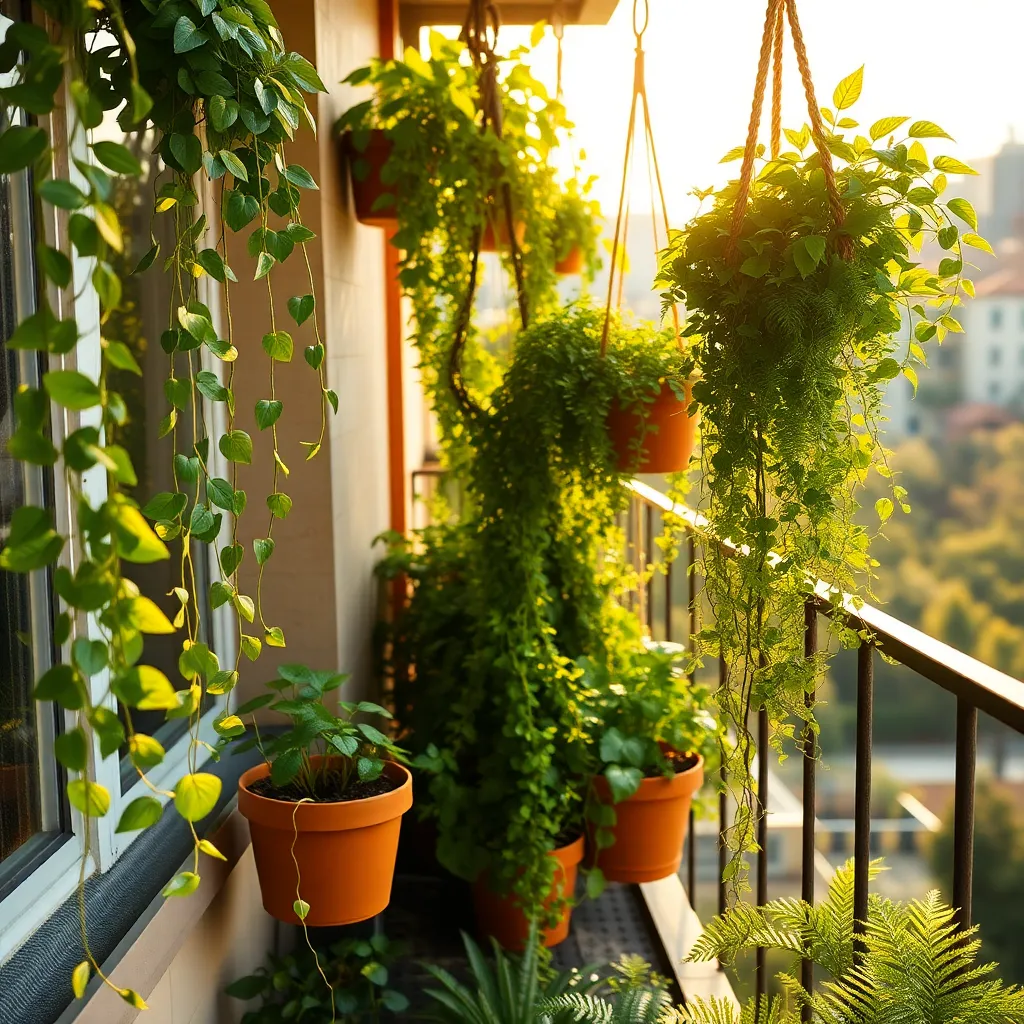
Cultivating hanging plants can significantly elevate your mental well-being by fostering a sense of accomplishment and connection with nature. Engaging with plants encourages mindfulness, helping you live in the moment and reducing stress levels.
To maximize these benefits, choose hanging plants that are easy to care for, such as pothos or spider plants, which thrive in various light conditions. These plants are perfect for beginners, as they require minimal maintenance—just water them when the top inch of soil feels dry.
For a more immersive experience, consider creating a routine where you spend a few minutes each day tending to your plants. This practice can serve as a meditative break from daily stressors, allowing you to recharge mentally.
Experienced gardeners might explore more challenging varieties like orchids or ferns, which can enhance your skills while providing a beautiful display. Ensure these plants get indirect light and maintain humidity by misting them regularly or placing a humidifier nearby.
Boosting Plant Growth Efficiency

One of the most practical benefits of hanging plants is their ability to enhance plant growth efficiency. By suspending plants, you can maximize light exposure, ensuring each leaf gets ample sunlight, which is crucial for photosynthesis. This is particularly beneficial for sun-loving species like pothos or spider plants. Additionally, hanging plants can be rotated easily to ensure even growth on all sides.
When it comes to watering, a strategic approach can boost growth. For hanging plants, consider using a drip irrigation system or self-watering pots to maintain consistent moisture levels, which is vital for healthy root development. Beginners can start with plants like English ivy, which are forgiving and thrive in varied conditions. For more experienced gardeners, experimenting with air plants can provide a new challenge as they require minimal soil and absorb moisture through their leaves.
Soil quality is also key when it comes to hanging plants, as the restricted space demands a high-nutrient environment. Opt for a lightweight, well-draining potting mix, ideally one with added perlite or vermiculite, to maintain aeration and prevent root rot. Regularly feeding with a balanced, water-soluble fertilizer can further enhance growth, especially during the growing season. For those looking to advance their skills, incorporating slow-release fertilizers into the soil mix can provide consistent nutrient delivery over time.
Another factor to consider is pest control, as hanging plants can sometimes be more susceptible due to their elevated position. Regularly inspect the foliage for signs of pests like aphids or spider mites, and use organic insecticidal soap to treat infestations promptly. Keeping an eye on humidity levels can also deter pests, as many prefer dry conditions, so maintaining a slightly humid environment can be beneficial. In essence, with the right care and attention, hanging plants not only thrive but can significantly boost overall garden productivity.
Conclusion: Growing Success with These Plants
In nurturing hanging plants, we uncover five unexpected gems that can enrich our relationships. First, tending to these green companions fosters teamwork and shared responsibilities, enhancing your bond. Second, the calming presence of plants reduces stress, creating a more harmonious living environment. Third, their beauty and growth spark creativity and inspire meaningful conversations. Fourth, the act of caring for plants cultivates patience and understanding, teaching valuable lessons that translate into human connections. Finally, the shared joy of watching plants thrive reinforces a sense of accomplishment and togetherness.
To harness these benefits, consider starting a small indoor garden with your partner today. Choose a plant together, nurture it, and witness how this simple act can deepen your connection. Remember, relationships, like plants, require care and attention to flourish.
Bookmark this article as a reminder of how these green allies can transform your relationship journey. By integrating these practices, you’re laying the groundwork for a relationship that thrives on mutual growth and understanding. Here’s to a future where your love story blossoms as beautifully as your hanging garden. Save this guide to revisit these insights and keep your relationship thriving.

